Just In
- 7 hrs ago

- 8 hrs ago

- 11 hrs ago

- 11 hrs ago

Don't Miss
- News
 Harvey Weinstein's Conviction Overturned, Netizens Angered Over Elite Privilege
Harvey Weinstein's Conviction Overturned, Netizens Angered Over Elite Privilege - Finance
 3 Bonus, 1:2 Split, 38 Dividends: Rs 1,915 Midcap IT Stock To Pay 360% Dividend After Q4 Profit Rises
3 Bonus, 1:2 Split, 38 Dividends: Rs 1,915 Midcap IT Stock To Pay 360% Dividend After Q4 Profit Rises - Movies
 Arti Singh Wedding: Groom Dipak Chauhan’s First Look Out As He Reaches Venue With Baraat - VIRAL VIDEOS
Arti Singh Wedding: Groom Dipak Chauhan’s First Look Out As He Reaches Venue With Baraat - VIRAL VIDEOS - Sports
 T20 World Cup 2024: Waqar Younis Predicts Pakistan's 15-Man Squad; Drops This Express Pacer
T20 World Cup 2024: Waqar Younis Predicts Pakistan's 15-Man Squad; Drops This Express Pacer - Automobiles
 Royal Enfield Unveils Revolutionary Rentals & Tours Service: Check Out All Details Here
Royal Enfield Unveils Revolutionary Rentals & Tours Service: Check Out All Details Here - Technology
 Elon Musk’s X Is Launching a TV App Similar to YouTube for Watching Videos
Elon Musk’s X Is Launching a TV App Similar to YouTube for Watching Videos - Education
 AICTE introduces career portal for 3 million students, offering fully-sponsored trip to Silicon Valley
AICTE introduces career portal for 3 million students, offering fully-sponsored trip to Silicon Valley - Travel
 Escape to Kalimpong, Gangtok, and Darjeeling with IRCTC's Tour Package; Check Itinerary
Escape to Kalimpong, Gangtok, and Darjeeling with IRCTC's Tour Package; Check Itinerary
8 Most Powerful Hanuman Temples In India
Lord Hanuman is known as the ,on of wind god, Vayu, and a faithful devotee of Lord Rama. Often called as the Monkey God in Hinduism, he is well versed in the Vedas, and is kwown by the name of Maruti (one who is born from Marut) or Bhajrangbali. This deity has a staunch base of devotees all over the world.
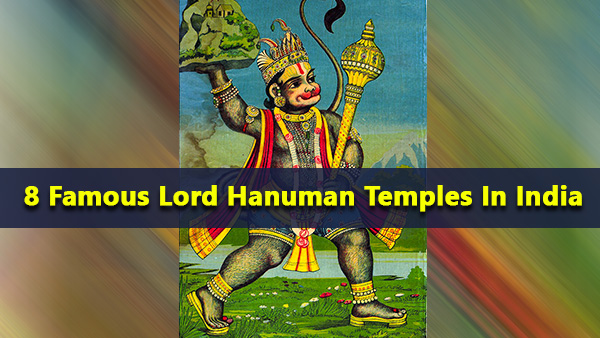
Scores of Hanuman temples can be found throughout the length and breadth of India. Always trusted as a jagruta daiva (the deity who is always awake to the prayers of devotees), Lord Hanuman is known to rush to his devotees' rescue in response to their prayers. He is believed to exist in temples, especially powerful in certain temples, for past so many decades and centuries. Let us in depth, explore the eight famous temples for Lord Hanuman in India.
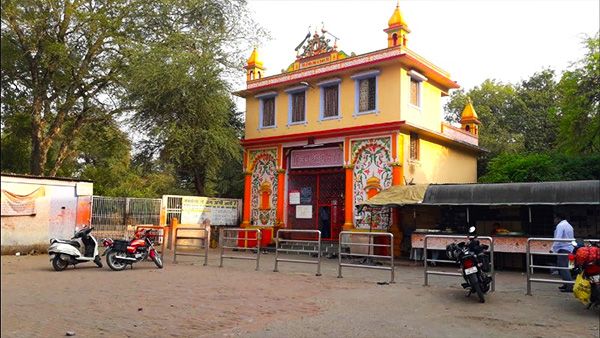
1. Sankat Mochan Hanuman Temple
Located in Varanasi, uttar Pradesh, on the banks of Assi, it was a constructed as per instrcutions from tulsi Das, the author of Hanuman Chalisa and Ramcharitmanas.
Lord Hanuman faces Lord Rama's idol in the temple. It is a wide spread belief that Tulsidas had a darshan of Lord Hanuman in this temple. Hanuman is known as ‘Sankat mochan' which if translated to English language means ‘one who wards off troubles.'
Besan laddu is the most preferred prasad that is offered to the lord. He is worshipped here for the removal of inimical planetary effects from the birthchart. Every April, annually, Sankat Mochan sangeet samaroh, a concert of music and dance which is well attended by participants all over India, add bliss to the faith of the devotees. Annually festivals are conducted on the Chaitra Poornima as well. On every Tuesday and Saturday, the crowd of devotees almost doubles up in strength, inarguably one of the best ancient Hindu shrines in Varanasi, the Sankat Mochan is visited by thousands of devotees of devotees every day

2. Jakhu Temple
Jakhu peak is the highest peak in Shimla, Himachal Pradesh. It is believed to exist from the times of Ramayana, and visited by Lord Hanuman, during the time of war, between Rama and Ravana. A huge 108 feet idol of Hanuman was installed and unveiled for darshan in 2010. A unique purpose was behind establishment of this temple.
While leading the army of vanaras (a certain kind of monkey faced men with superpowers) in the war of Ramayana, Lakshmana, shot by an arrow, had fallen unconscious. Lord Hanuman, quickly set out to Gandhamadan mountain to bring the herbal medicines to revive him. While travelling all the way from Lanka, to the mountain,, on the way, he stopped at the Jakhu peak to take some moments of rest. Hence a temple was raised in this spot to celebrate the coming of Lord Hanuman in this area.
Annual Dussehra is celebrated here, butdue to lack of proper access to the place for the devotees, a ropeway was set up in 2017 to facilitate a closer darshan of the lord. Standing at the top of the hill, one can savour the splendour of the Shivalik mountain ranges. You can also spot bands of monkeys, jumping about, in enthusiasm, ready to greet you to the place.
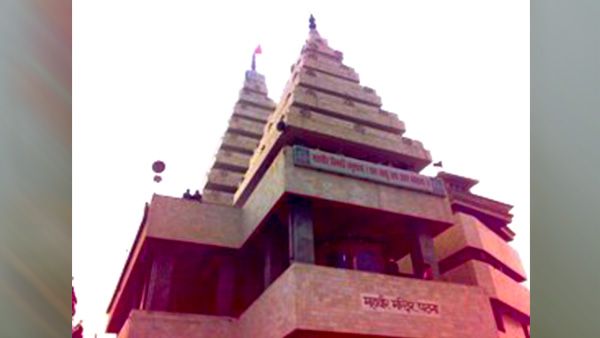
3. Mahavir Mandir
Located in Patna, Bihar, this temple was first built by Swami Bal Anand in 1730, during the 1947 partition of India, where refugees had poured into Patna. At this time, the temple was already famous, and hence what was built initially in concrete, later, was replaced by a marble construction in 1987.
This temple is built-in three storeys of which the ground floor is reserved for Lord Hanuman who fulfils wishes as well as cleanses them throughout. Lord Shiva is also seen installed inside a sanctum here. The first floor is allotted to the idols of Lord Rama. Lord Krishna, Lord Shiva, Goddess Parvati, and Nandi.
Surprisingly, you can find a Ramsetu Shila, the stone that was used to build the bridge of Ramasetu by Rama to cross the distance, reach Lanka to release Goddess Sita. However, the second floor, is strictly meant for performing religious ceremonies.
After Vaishno Devi, in Kashmir, this is the next most visited temple in North India. Ramanavami is a very well-attended event, every year, where thousands of pilgrims gather to offer their worship to god. Also referred to as Manokamna temple, which means, that prayers offered here will receive positive and quick results. These 135 feet tall statue, unveiled in 2003 in Andhra Pradesh, is the tallest Hanuman statue in the world. Outside of India, the Hanuman Statue at Trinidad stands tall at 85 feet of height.
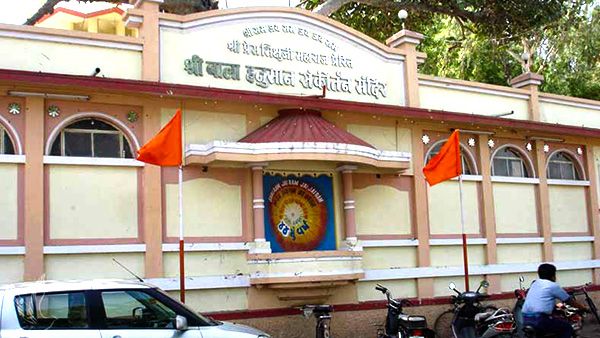
4. Bala Hanuman Temple (Also called Shri Balahanuman Sankirtan Mandir
It is located in Jamnagar in Gujarat, on the south-eastern part of the Lakhota lake. And established by Shri Prem Bhushanji Maharaj in 1963-64. The temple is home to the idols of Lord Ram, Lord Lakshmana, Goddess Sita, and Lord Hanuman.
On 01 August 1964, there was a unanimous resolution taken to keep the chant of the ram tarak mantra sri ram jaya ram jai jai ram alive and continuous. The event wherein devotees take turns in chanting it night and day, has set a Guiness world record which has recognized the faith and steadfast devotion that this deity is attracting. The local belief about this practice is that it saves them from natural calamities and other unforeseen disasters. Arti is carried out twice in a day (morning and evening). The evening arti is the one to look forward to. Khijadia Bird Sanctuary, a popular tourist spot is located in the vicinity of this temple. Narara Marine National Park is in a distance of about 55 km. Best time to visit this temple is the time between December to March. Apart from that, Dwarkadhish Temple is about 143 km from this temple.

5. Hanuman Mandir (Also called Bade Hanuman Ji Temple)
On the banks of the Sangam or union of rivers Ganga, Yamuna and Saraswati at the area of Allahabad, Uttar Pradesh is where this Hanuman or Bade Hanuman Ji Mandir is located. It is believed to have a history as old as the Indian Epic Ramayana dating back to Tretayuga. About 20 feet long and 8 feet wide, and seated underground in a reclining pose, he is fondly called ‘Lete (lying down) Hanuman' Mandir. Half of the idol is immersed in water as the holy waters of Ganga rises up to touch the feet of Lord Hanuman every year.
He is called Bade Hanuman because he is of huge gigantic size. As per a legend, Lord Hanuman had spent few moments for resting in this area. As per another legend, a wealthy childless trader constructed this idol and gave it a holy bath at various holy rivers located in different places. At prayag, as per Lord's dictates in a dream, that he had, he left the statue there, and returned to his place, because of which, he was blessed with a son and his wishes were fulfilled. The Allahabad Fort is another tourist attraction that is located near this temple.
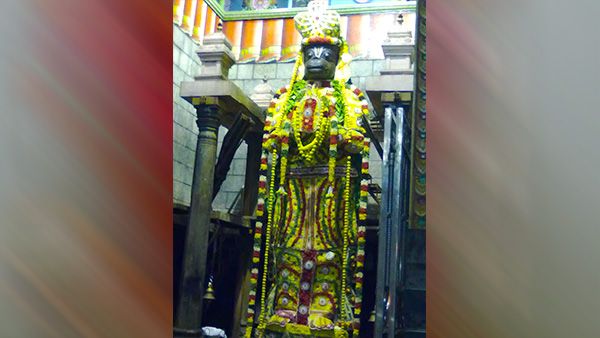
6. Namakkal Anjaneyar Temple
Namakkal Anjaneyar Temple is situated in namakkal of tamil Nadu, has been in existence sicne 5th century BC. The premises of the temple, have built in pillars that leads one to the sanctum. It houses one of the very tall hanuman statues in India, about 18 feet tall, facing the Narasimha shrine at the foot hills. There is a widespread legend which goes thus. Goddess Laxmi, while penancing at this spot, saw in the hands of Lord Hanuman, the Saligrama stone in which Lord Vishnu's image had been carved.
Wishing to see Lord Vishnu, in the Narasimhavatar form, Laxmi requested Lord Hanuman to hand it over to her for a moment. Lord Hanuman placed it in her hands for safeguarding until he returned. Placing this image at this spot, Laxmi noticed that it grew into a huge mound before Lord Hanuman's arrival. It was at that time, that Lord Vishnu gave them his darshan in the Narasimha Avatar to both Goddess Laxmi and Lord Hanuman. Annually, around March or April in the Phalguni montḥ Panguni Uthiram, a 15-day festival is conducted. The deities are taken out in procession around the temple. Upon the foothills of this mound, one can sight the temple for Narasimhaswamy, which also has a huge number of visitors to its premises.

7. Hanumangarhi
Known to have existed from the ancient origins, in Ayodhya Uttar Pradesh, this temple, built in 10 Century CE, resembles a fort in appearance, covered from all four sides, the corners of which, for every side, there is a circular bastion that houses a Lord Hanuman Mandir. Goddess Anjana Devi resides in the main temple, seated with Bal Hanuman on her lap. You have to climb up 76 stairs to reach the temple. Lord Hanuman is believed to have lived in a cave to guard Ramkot,
Lord Rama's greatest devotees find it immensely rewarding, to spend a few hours, in this temple of Lord Hanuman, who shares a verry close bond with Lord Ram. It is a must to visit Hanuman before stepping into the Lord Ram temple. Hanuman Jayanti and Ram Navami are the opportune times to visit this temple, as the wishes made in this temple during this time, get fulfilled.
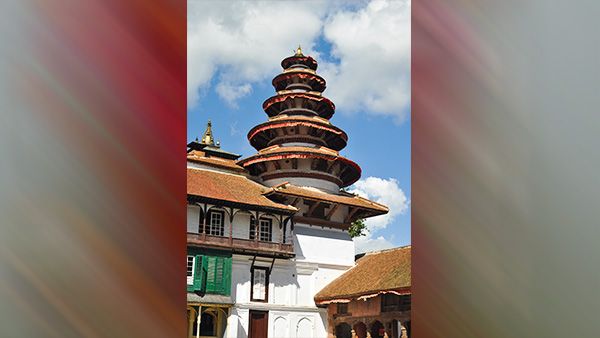
8. Panchamukhi Hanuman Temple
This temple is believed to exist from the times of Ramayana and is located in the Rameshwaram of Tamil Nadu. The Lord Hanuman idol has five faces displaying five deities, that is, Lord Hanuman in the Centre, Lord Narasimha (facing south), Lord Adivaraha (facing north), Lord Garuda (facing west) and Lord Hayagriva (facing the sky) on the sides.
Idols of Lord Rama and Goddess Sita are also found here. During the war of Ramayana, Ravana helped by Mahiravana, another demon that disguised as Vibheeshana approached Lord Ram and Lakshman and used his make-believe tricks, to carry them to patala loka in order to kill them. To kill Mahi Ravana, Lord Hanuman, he had to put out the fire of five lamps at once by assuming the form of Panchamukhi hanuman, which was exactly the original form of Lord Hanuman.
Floating stones used for building Ramsetu, are found deposited here. It is located 2 kilometres away from Sri Ramanathaswamy Temple. By praying to Lord Narasimha's face, one can get rid of their enemies, Lord Garuda is worshipped here to eradicate the evil planetary effects. Lord Varaha is prayed for wealth, and Lord Hayagriva for knowledge. Lord hanuman in the middle, is worshipped for removal of sins and for obtaining a pure state of mind.
Disclaimer: The information is based on assumptions and information available on the internet and the accuracy or reliability is not guaranteed. Boldsky does not confirm any inputs or information related to the article and our only purpose is to deliver information. Boldsky does not believe in or endorse any superstitions.
-
 insyncAnant Ambani- Radhika Merchant Wedding: 14 New Temples Being Built In Gujarat To Mark This Grand Union
insyncAnant Ambani- Radhika Merchant Wedding: 14 New Temples Being Built In Gujarat To Mark This Grand Union -
 insyncAyodhya Ram Mandir:Best Routes, Fare, Transport Options And How To Reach And See The Majestic Lord Rama Temple
insyncAyodhya Ram Mandir:Best Routes, Fare, Transport Options And How To Reach And See The Majestic Lord Rama Temple -
 yoga spiritualityAmid Ongoing Ayodhya Ram Mandir Fete, Explore 8 Extravagant Lord Rama Temples Across India
yoga spiritualityAmid Ongoing Ayodhya Ram Mandir Fete, Explore 8 Extravagant Lord Rama Temples Across India -
 yoga spiritualityAyodhya Ram Mandir: Must Visit These 10 Places In Ayodhya That Hold Immense Spiritual Significance
yoga spiritualityAyodhya Ram Mandir: Must Visit These 10 Places In Ayodhya That Hold Immense Spiritual Significance -
 yoga spiritualityJanmashtami 2023: 10 Temples Dedicated To Lord Krishna That You Must Visit
yoga spiritualityJanmashtami 2023: 10 Temples Dedicated To Lord Krishna That You Must Visit -
 yoga spirituality10 Magnificent Temples In India To Visit During Monsoon
yoga spirituality10 Magnificent Temples In India To Visit During Monsoon -
 yoga spiritualityNava Tirupathi, Vaithamanidhi Perumal Temple (Thirukolur) - Where The Lord Bestows Wealth
yoga spiritualityNava Tirupathi, Vaithamanidhi Perumal Temple (Thirukolur) - Where The Lord Bestows Wealth -
 yoga spiritualityNava Tirupathi, Makara Nedungkuzhaikaathar Perumal Temple (Thenthiruperai): Relief From Curse For Bhudevi
yoga spiritualityNava Tirupathi, Makara Nedungkuzhaikaathar Perumal Temple (Thenthiruperai): Relief From Curse For Bhudevi -
 yoga spiritualityNava Tirupathi, Venkatavaanan Perumal Temple (Perungulam): Where The Lord Bestowed His Grace On A Brahmin Coup
yoga spiritualityNava Tirupathi, Venkatavaanan Perumal Temple (Perungulam): Where The Lord Bestowed His Grace On A Brahmin Coup -
 yoga spiritualityNava Tirupathi, Srinivasa Perumal Temple (Tholaivillimangalam): Where The Lord Bestowed His Grace On A Sage!
yoga spiritualityNava Tirupathi, Srinivasa Perumal Temple (Tholaivillimangalam): Where The Lord Bestowed His Grace On A Sage! -
 astrologyWhich Temple To Visit According To Your Birth Chart
astrologyWhich Temple To Visit According To Your Birth Chart -
 yoga spiritualityNava Tirupathi, Aravindalochanar Temple, (Tholaivillimangalam): In This Temple Lord Vishnu Cured A Leper!
yoga spiritualityNava Tirupathi, Aravindalochanar Temple, (Tholaivillimangalam): In This Temple Lord Vishnu Cured A Leper!


 Click it and Unblock the Notifications
Click it and Unblock the Notifications



